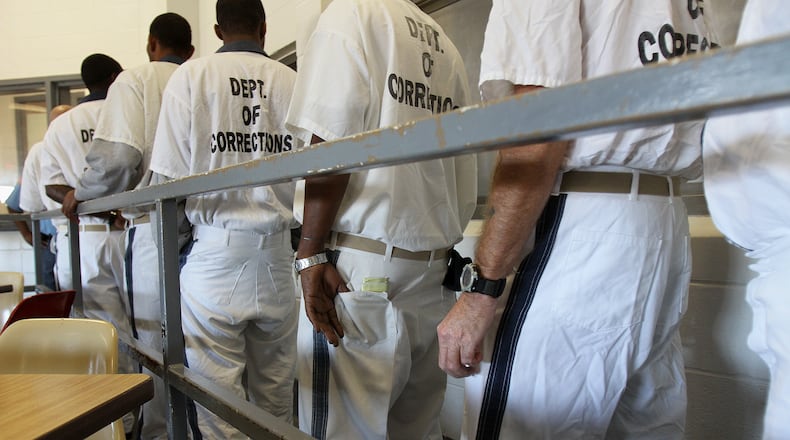Three state inmates have died of apparent suicides this week, the latest in what advocates say is an alarming rise in the number of Georgia prisoners taking their own lives.
If the deaths are confirmed as suicides, they will bring the tally over the last 12 months to to 21. By comparison, there were just eight inmate suicides in the state during the previous 12-month period.
Sarah Geraghty, managing attorney for the Southern Center for Human Rights, attributes the rising number of inmate suicides to Georgia’s increased use of strict isolation. The Southern Center is among the groups that have sued the state Department of Corrections challenging its use of the “special management unit” at the Georgia State Prison at Reidsville.
According to the state Department of Corrections, the first apparent suicide this week was on Sunday afternoon when Jamika Harrison was found unresponsive in her cell at Pulaski State Prison near Hawkinsville where she was serving a 10-year sentence for aggravated assault.
Less than 24 hours later, on Monday morning, Stephen Beck was found in his cell at Wilcox State Prison. Beck, 24, was serving a 10-year sentence for a Lowndes County attempted murder.
The third inmate to die this week of an apparent suicide, 29-year-old Michael Jordan, was found early Wednesday morning at the Georgia State Prison at Reidsville. Jordan was serving life without parole for a 2013 murder in Clayton County. State corrections officials would not say whether Jordan was in an isolation unit at the prison.
"While one suicide is too many, this complex issue has become a serious nationwide focus," DOC spokeswoman Joan Heath said. "Over the last two decades, many states saw a significant increase in suicide rates."
The DOC will add a psychologist to focus on suicide prevention. And two psychiatrists will also join the staff at two of the state’s 22 state prisons.
Heath said DOC provides inmates with suicide prevention awareness information, has given them permission to call the National Suicide Prevention Hotline and enhanced staff training of suicide awareness and prevention.
But Geraghty said those measures provide little help.
“How are people locked down 23/7 supposed to access a suicide hotline anyway?” she countered.
Only six months in to this year, the inmate suicide rate is 22 per 100,000 and still significantly more than the national rate of 16 per 100,000.
“Substantially more oversight by psychiatrists and other mental health professionals would be helpful. But two more providers statewide won’t make a dent,” Geraghty said.
“For many people with serious mental illness in prison, ‘treatment’ consists of a counselor shouting ‘how are you doing’ through a cell door and then moving on to the next person,”
All total, there are at least 15 lawsuits are challenging the use of the “special management unit” at the prison in Reidsville where Jordan died. The Southern Center represents prisoners in one of the suits, a private attorney brought a second one and the other 13 were filed by inmates acting as their own attorneys.
The details in each of the complaints are the same.
Inmates assigned to the "special management unit" are placed in cells that get no outside light and have solid metal doors out of which they cannot see. The inmates spend 24 hours a day alone in those cells, without diversions like reading or television, except 2 1/2 hours a week when they are let out for exercise.
Three of the inmates who died last year were in isolation cells when they killed themselves. One other was on Death Row, which is also isolating.
“We hope that the Department will re-think its over-reliance on solitary confinement, which is known to increase the prevalence of self-harm and suicide,” Geraghty said.
About the Author
Keep Reading
The Latest
Featured




